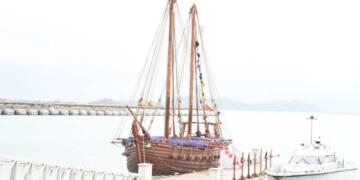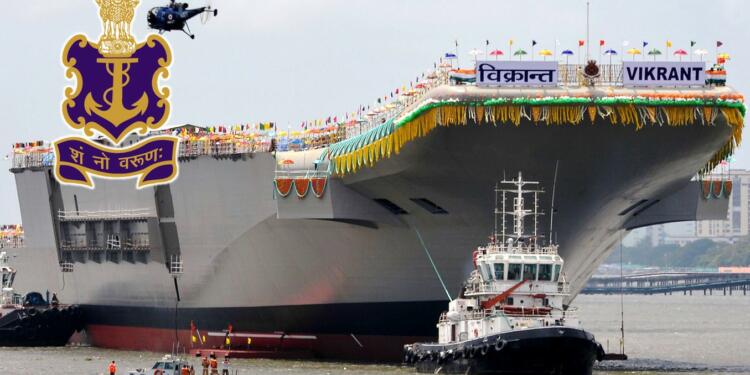Those who rule the waters rule the world. This phrase is used to describe the strategy followed by the British empire around the world. Being the strongest Naval power of the time, they were able to rule over more than 50 countries. Although India does not have any intention to rule the world, the nation needs a strong & modern Navy to save its interests in territorial waters & beyond.
The Great Leap Forward
On the 50th anniversary of Cochin Shipyard Limited (CSL), Bejoy Bhasker, director (technical) of Cochin Shipyard Limited (CSL) announced that the first Indigenous Aircraft Carrier (IAC) will be commissioned on Independence Day this year. In a press brief, he said “We will hand over the IAC to the Indian Navy next month after which the ship will take the name of INS Vikrant. India’s first aircraft carrier will be commissioned on Independence Day in August this year.”
Further explaining the capabilities developed over the years of experience in making the IAC, he said, “If the Indian Navy asks us to bring out another aircraft carrier of 45000-ton category like INS Vikrant, we can do it in five years.”
Read more: India’s defence manufacturing just got a massive upgrade
Why the first IAC is a milestone
Taking a great leap forward in the direction of indigenous defence technology, India has now developed its first indigenous aircraft carrier, INS (Indian Naval Ship) Vikrant. It is pertinent to note that in 1999, the Atal Bihari government authorised the development & construction of an indigenous aircraft carrier under the Project 71 Air Defence Ship (ADS). After waiting for 23 years, the nation will finally induct its first indigenous aircraft carrier.
An aircraft carrier is like a moving air defence system equipped with a full-length flight deck capable of carrying, arming, deploying & recovering aircraft. It gives an option to launch an airstrike from anywhere in the waters. Further, it gives a second-strike capability to the Navy in case runways are being destroyed by enemy forces during a war.
The INS Vikrant is expected to be equipped with shipborne weapons like Barak LR SAM & AK-630. The aircraft carrier is expected to have a top speed of 30 knots & be propelled by four gas turbines. Furthermore, its endurance is 7500 nautical miles at 18 knots speed. It will have a consortium of 30 aircraft, comprising MiG-29K fighter jets, Kamov-31 airborne early warning helicopters & recently inducted MH-60R multi-role helicopters.
Till now we had only three aircraft carriers since Independence and all of them were purchased from other countries. The INS Vikrant and INS Viraat were purchased from the British in 1961 & 1987 respectively. The only serving aircraft carrier is INS Vikramaditya which was decommissioned in 1996 by Russia. But after some modification & refurbishment, the Indian Navy purchased it in January 2004 & finally after years of negotiations it was recommissioned in the Indian Navy in November 2013.
Read More: With Tejas jets sale to Malaysia almost a certainty, India becomes a defence exporter
India has about 7516 km of coastline and is surrounded by water on three sides. In the East, there is the Bay of Bengal, in the West, the Arabian Sea & in the South lies the Indian Ocean. Furthermore, around 70% of India’s trading in value terms is handled through coastal areas.
To maintain its dominance in the Indian Ocean region and to counter the growing threat posed by China & Pakistan, it becomes important for India to upgrade its defence capabilities. An indigenous aircraft carrier is a strategic weapon that meets this requirement. Furthermore, the indigenous development of defence equipment will reduce the dependency of India on other countries for its military requirements & will give a boost to domestic defence sector.































